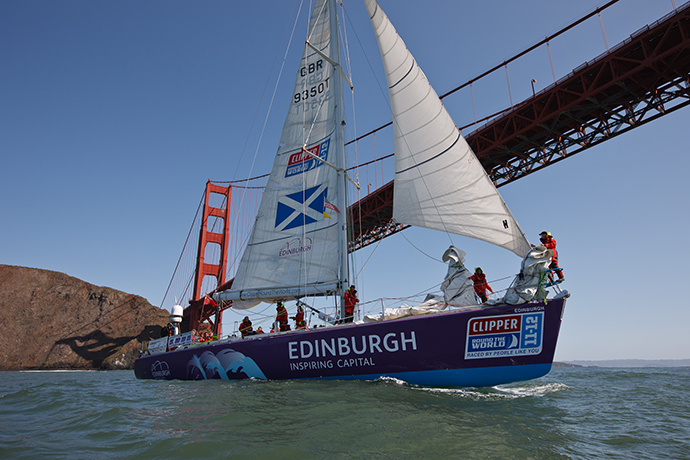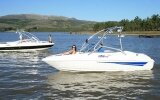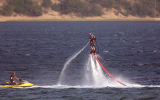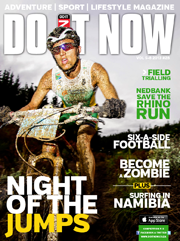- Magazine
- #readityourway
- Weekly Stories
- #shareyourstory
-
Adventure
- Abroad Travelling
- Africa Travelling
- Events
- Expos & Shows
- Festivals
- Fishing
- Free Diving
- Gliding
- Horse Riding
- Inspiring People
- Islands Travelling
- Kite/Windsurfing
- Motorbiking
- Motorised Water Sports
- Mountaineering
- Mountain Biking
- Off-road 4x4
- Off-road Motorbiking
- Paddling
- Performance Driving
- Photography
- Rock Climbing
- Rollerblading
- Sailing
- Scuba Diving
- Skateboarding
- Skydiving
- Snowboarding & Skiing
- Surfing
- Swimming
- Trail Running
- Wakeboarding
- Waveski Surfing
-
Sport
- Adventure Racing
- Fishing
- Free Diving
- Gliding
- Health & Fitness
- Horse Riding
- Inspiring People
- Kite/Windsurfing
- MMA
- Motorbiking
- Mountain Biking
- Multi-sport
- Off-road 4x4
- Off-road Motorbiking
- Paddling
- Performance Driving
- Photography
- Road Cycling
- Road Running
- Rock Climbing
- Rollerblading
- Sailing
- Scuba Diving
- Skateboarding
- Skydiving
- Snowboarding & Skiing
- Surfing
- Swimming
- Rugby
- Trail Running
- Triathlon
- Wakeboarding
- Waveski Surfing
- Lifestyle
- Calendar
Taking on the World’s Longest Ocean Race
Words: Nick Barclay | Photos & Video: Clipper Ventures
Topic:
Motorised Water Sports
Nick Barclay, 31, from Cape Town decided to swop his high-flying career in marketing for the challenge of competing in the world’s longest ocean race. With no previous sailing experience, but with a love of adventure, Nick describes how the Clipper 2011-12 Round the World Yacht Race brought him back to life.

How many people do you know that dream of swopping their everyday lives for the adventure of travelling the world? Some book a round the world flight, some just want to see Europe, while others dream of driving from one coast of America to the other. For me, I wanted to take on the ultimate challenge; to sail around the world while competing in the 40,000 mile Clipper Round the World Yacht Race.
It was while I was going into my final year at university that my life changed almost overnight. I hadn’t been feeling well for a while and after several tests it was revealed that my kidney was failing.
Facing your own mortality in your mid-twenties is a difficult feeling to explain. I was studying for my final year exams, but with the added stress I found myself putting my studies on hold as I was too weak to cope. Thankfully, a suitable donor was found and in 2006 I had a kidney transplant. It was a long road to recovery, but I was just so relieved to feel well and carry on with my everyday life again; it felt like I had a new lease on life!
I eventually went back to my studies and finished my degree, as everyone expected. However, it was after graduating and starting work as a Marketing Strategist that I realised my goals and perspective on life had changed. I no longer dreamt of being part of the rat race - I wanted more from life.
The big push that I needed came when my long-term relationship ended. All of a sudden I found myself unattached, with no debt, no responsibility and desperately unhappy with my lot - it was time to do something about it.
I came across the Clipper Round the World Yacht Race while searching sailing schemes online. I’d always had an interest, but never really done any sailing which, to my surprise, wasn’t a problem. Ordinary people from all walks of life who had never sailed before were signing up to compete in the world’s longest ocean race. Sir Robin Knox-Johnston, the first man to sail solo, non-stop around the world back in 1968-9, was the founder of the Clipper Race. As I sat scrolling from page to page, his words jumped out at me: “I want people coming back from this race and saying it’s the best thing I’ve done in my life ... so far!" he said. That was it! I sent my application in and took my very first steps toward circumnavigating the globe. I attended an interview in the UK where Clipper Ventures is based, and it was an anxious wait to hear if I had been successful. When I found out I was going to spend the next 11 months of my life sailing around the world, I was ecstatic!
The training was brilliant. It was split into three levels spread over a period of several weeks. It was tough and rigorous, but when you’re sailing in the most challenging conditions, in the most remote locations, you want to know what you’re doing and feel confident in your ability.
When it came to choosing which of the 10 matched fleet racing yachts I wanted to compete on, it was a no brainer. The Edinburgh Inspiring Capital entry decided they were going to have a relay group of doctors, nurses and patients, led by the University of Edinburgh, to tell their personal stories about organ transplantation and raise the awareness of the international shortage of organ donations. I met some incredible people along the journey; one fellow crew member, who joined us from the UK for the final leg of the race, had undergone a double lung transplant. She went on to become the first double lung transplantee to successfully cross the Atlantic Ocean. It was times like these that made me realise anyone can achieve anything if they really want it enough.
On Sunday, 31 July 2011 the 10 yachts taking part in the Clipper 2011-12 Race set sail from Southampton, UK. It was an unbelievable feeling, a huge sense of excitement and anticipation. Of course I’d be lying if I said I wasn’t worried about my health. My biggest concern was that if something went wrong while in the middle of the ocean, I would be unable to get the medical attention I needed. But that said, it was never an overriding fear as without the transplant I would never have been able to compete in the Clipper Round the World Yacht Race at all.
Life’s adventure is all about how you get there, and this was definitely a unique route I chose to take. Sailing into foreign ports and passing iconic monuments like Christ the Redeemer, in Rio de Janeiro, and the Golden Gate Bridge, in San Francisco, was so exciting. One of the highlights was when we were in New York and sailed past the Statue of Liberty proudly flying our spinnaker to celebrate The Queen’s Diamond Jubilee. There was a real sense of being a part of history; things like that I’ll never forget.
For me the biggest challenge of the race was the Pacific Ocean. It was cold, wet and grey for almost a month as we sailed from Qingdao, China, to San Francisco. In fact I can remember the first time we saw blue sky was when we were about three miles out from San Francisco. As for personal challenges, being in a confined space with people you are only getting to know can be difficult, with all the distinct and unique personalities. During my original interview, I had been told that the biggest challenge we would face during the race was each other! And they weren’t wrong. However, over time bonds were made and I know I have met people who will be lifelong friends.
What will stick in my mind are the lessons I’ve learned along the way: to push through the exhaustion, put on soaking wet gear and clamber on deck. Over the course of the race we’d battled mammoth oceans, extreme temperatures and all manner of winds. It’s when you push yourself to your limit and break through that mental barrier that you truly see what you are made of and capable of.
My reasons for doing the race were many and complex, but I think if I analyse them the root of it all is I wanted to feel alive again. This race offered me a unique opportunity to set out on a modern-day adventure, of ancient proportions, and do just that. There is definitely a certain romanticism attached to the mystique of sailing around the world, which seems to capture the hearts and minds of everyone you speak to about it.
Since the race finished in July 2012, I’ve gone on to complete my Yacht Master qualifications, which will hopefully mean I’ll be able to work professionally on boats around the world. Nothing beats the sense of freedom you feel when you’re at sea and it’s just you and the elements. For anyone looking to take on a new adventure, my advice would be to just do it! The more time you spend thinking about it, the more time you have to talk yourself out of it. After all, what’s the worst that can happen; it might just change your life forever.
dinFO
To find out more about the Clipper Round the World Yacht Race and how to apply visit www.clipperroundtheworld.com
Clipper 11-12 race facts
Tie every warp, line, sheet and halyard together from the
Clipper Race fleet and the ropes will stretch for a massive
13 kilometres – that’s almost twice the height of Mount Everest.
By the end of the 40,000 mile Clipper 11-12 Race, the Clipper fleet raced more than 2.2 million miles since the first edition back in 1996. That’s to the moon and back 11 times!
During Clipper 11-12, the teams got through something in the region of 14,600 loo rolls or 365,000 metres of toilet paper. That’s the equivalent distance of flying from London to Paris.
Ocean racing is thirsty work and the mother watches served an almost constant stream of hot and cold drinks. The 10 teams slurped their way through 244,000 tea bags while they were at sea.
Even before the race started, the crews completed a combined total of almost half a million training miles.
The fastest boat speed recorded on the Clipper 11-12 Race to date is 29.3 nautical miles across the Pacific, which is the equivalent of 34 miles per hour.
On each yacht, the round the world crew members on board spent at least three weeks of their life standing behind the wheel since the start of the race!
In the Clipper 11-12 Race there were 345 male crew members and 165 female crew members. The average age on board was 44.
The youngest crew member to do the race was Ben Turner, 19, from Cornwall (18 when the fleet left Southampton) and the oldest crew member to do the 11-12 race was Fred Tooley, 73, from New Zealand who completed Leg 4.
Clipper 11-12 is raced by ‘people like you’, as more than 230 different professions were represented from nurses to surgeons, pilots to farmers, engineers to accountants, teachers to students and the whole gamut of occupations in-between.
It was a truly international affair. More than 41 nationalities were represented by the crews of Clipper 11-12. They came from countries as far-flung as the USA, Canada, Russia, Serbia, Norway, New Zealand, Australia, South Africa, Zimbabwe, Brazil, Malaysia, China and Singapore, breaking through cultural and language barriers to work together and build lifelong friendships.
Clipper 09-10 was followed by a cumulative global audience of more than half a billion people on TV, radio, in the newspapers and online.
Issue:
Issue 22 Feb'13






